July
Showing 181–192 of 200 results
-
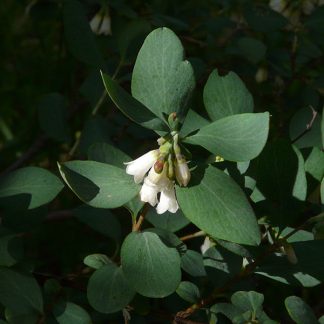
Symphiocarpos oreophilus / mountain snowberry
- small pink (or white) bell or funnel shaped flowers, singly or in pairs
- shrub - upright or spreading
- most visible in late summer when the white "berries" ripen
- in the open or in canopy gaps; along the sides Forest Service roads
-
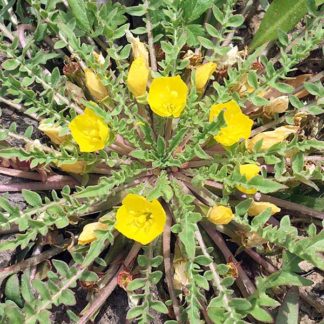
Taraxia tanacetifolia / tansyleaf evening primrose
- single, sessile, bright yellow, cup shaped flowers; 4 petals
- grows as a rosette, flat to the ground
- leaves are up to 12 inches long; very deeply lobed
- still blooming in mid-October; starts in mid summer
- grows on sandy/gravelly soil, e.g. drying lake beds
-

Tetradymia canescens / spineless horsebrush
- shrub - up to 3 feet tall and across; round
- small, yellow composite flowers in clusters of 4 to 8
- dandelion-like seeds often present with flowers
- primary leaves short and linear; long-lived
- secondary leaves in axils of primaries are short-lived
- primary leaves are not spines
-
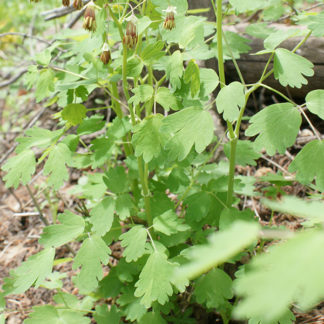
Thalictrum occidentale / western meadow-rue
- delicate compound leaves, each segment with 3 lobes
- leaves "look like" columbine
- male and female flowers on separate plants
- all flowers teeny, in clumps, somewhat to really purple
- in moist habitats, esp. stream banks in forests
-
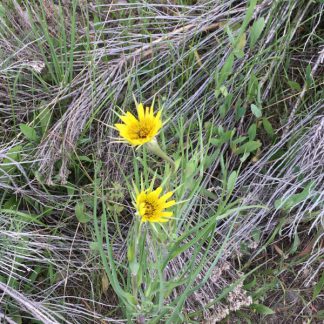
Tragopogon spp. / salsify
- large yellow inflorescence with pointy sepals extending past the "flower"
- grass-like leaves
- non-native, weed
- widespread
-
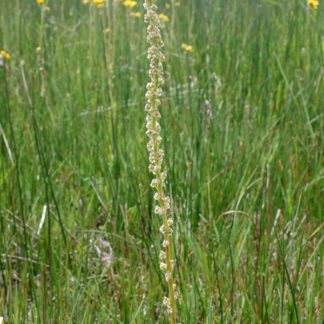
Triglochin maritima / seaside arrowgrass
- in bogs, fens, and roadsides through them
- "grass-like" leaves - semicircular cross section with a groove down the middle
- tall flowering spikes with many crowded, green/yellow-ish, teeny flowers
- clonal, so often in widely spaced clumps
-

Tripleurospermum inodorum / scentless chamomile
- daisy-like blossoms with finely divided leaves
- central disk shape changes from button- to dome- to hemisphere- with age
- ray petals droop as disk expands
- leaves don't smell when crushed
-
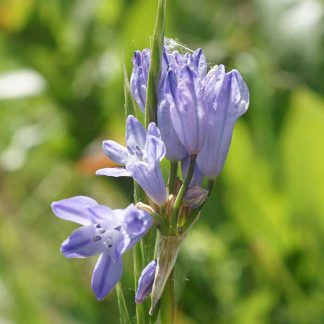
Triteleia grandiflora / wild hyacinth
- terminal cluster of several, blue (to white) funnel-shaped flowers
- 6 tepals, 3 of which look wrinkled; deep blue lines on each tepal
- only 2-3 very long thin basal leaves
- onion-like but not smelly
- mostly in grasslands - late June, early July
-
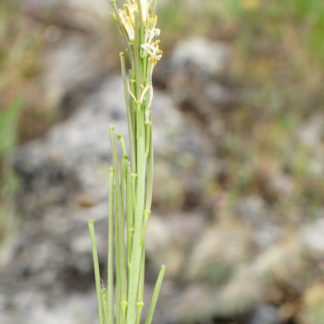
Turritis glabra / tower mustard
- long (3"-ish) stick-like seedpods, erect and hugging the stem
- nondescript mustard-family 4 petalled flowers in a cluster at the top
- tall stem with leaves clasping the stem (no petioles)
- generally in exposed, dry habitats
-
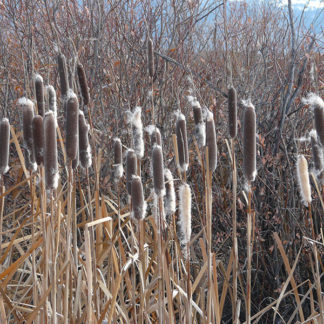
Typha latifolia / cattail
- tall, grass-like with thick, long, flat leaves
- in wet areas, especially streams and stream banks
- inflorescence club-like spike; yellow (male) above, green (female) below
- seed head dark brown club, with bare spike above
- fruits (seeds) white & fluffy, released in late summer, autumn, winter
-
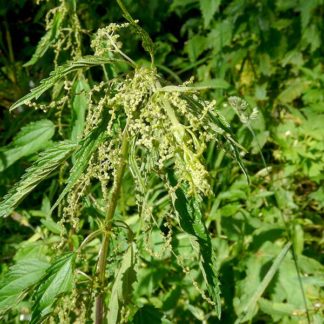
Urtica dioica / stinging nettle
- near streams and moist bogs, in woodland understories, disturbed places, wastelands
- leaves - strongly serrated margin, a heart-shaped base, a pointed tip
- flower - greenish or brownish in dense dangling clusters
- nasty hairs that sting you
-

Utricularia macrorhiza / common bladderwort
- free-floating aquatic perennial; only the flowers are above water
- yellow, snap-dragon-like flowers; up to 20 per stalk; ca. 1" across
- very fine "leaves" underwater, supported by small (1/8") bladders
- carnivorous and/or symbiotic - bladders capture/digest v. small animals, harbor symbionts
Showing 181–192 of 200 results